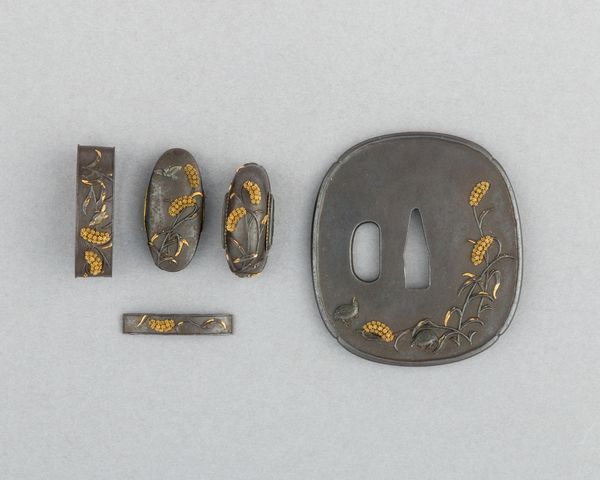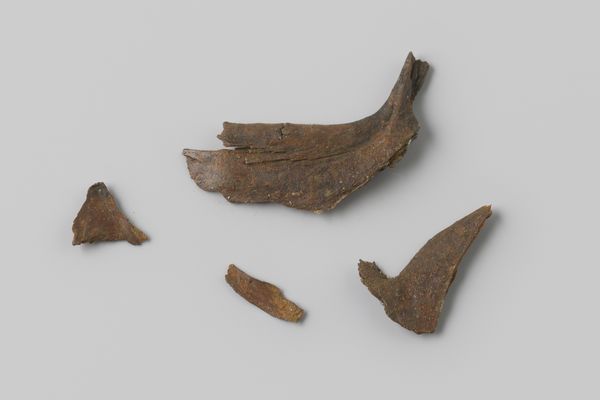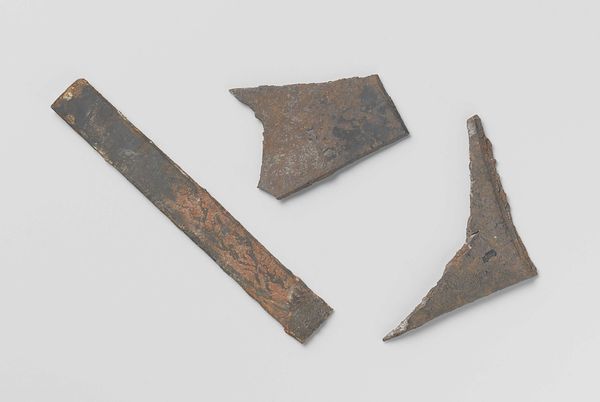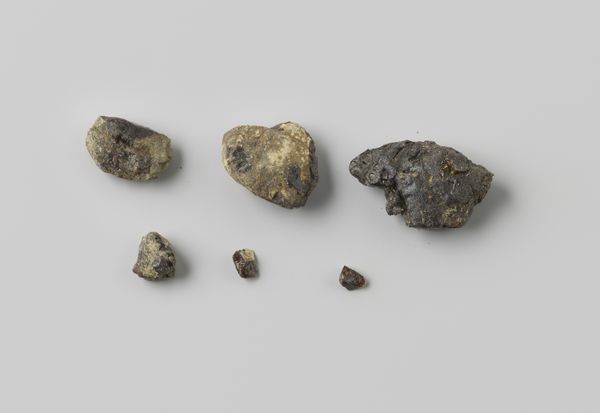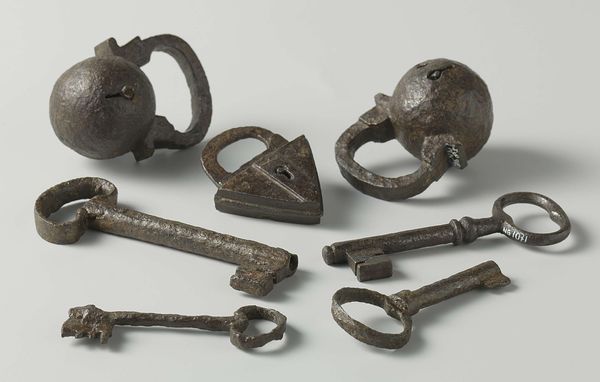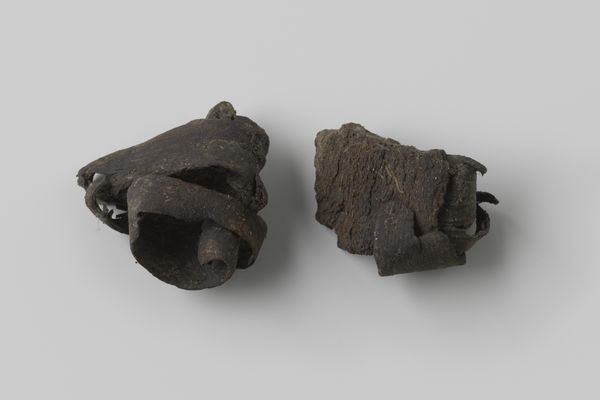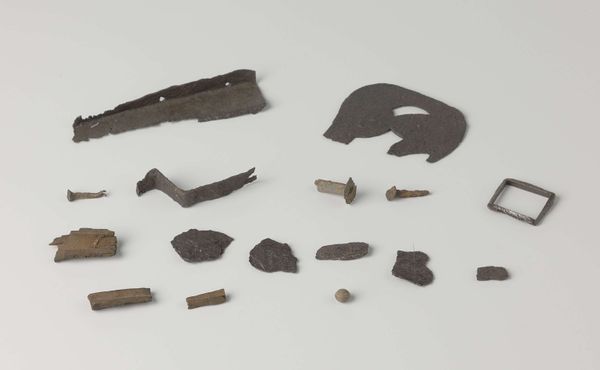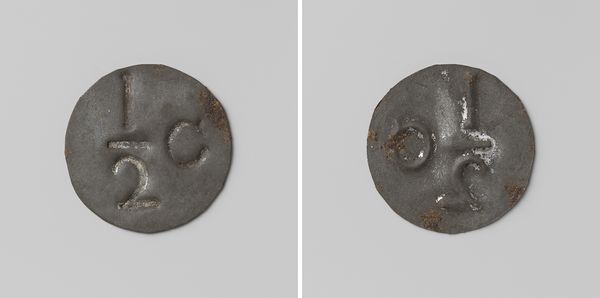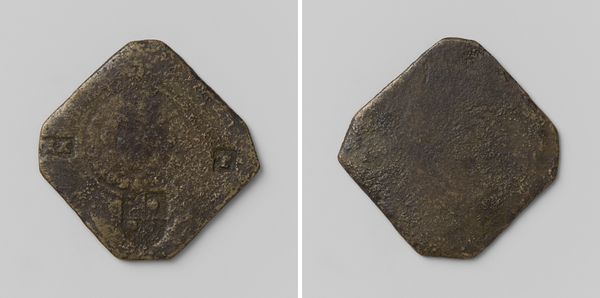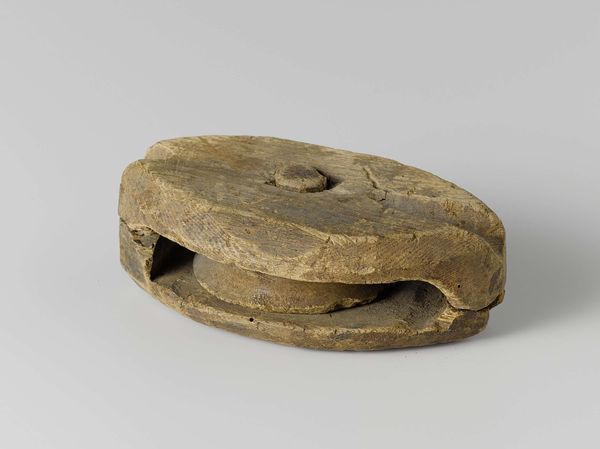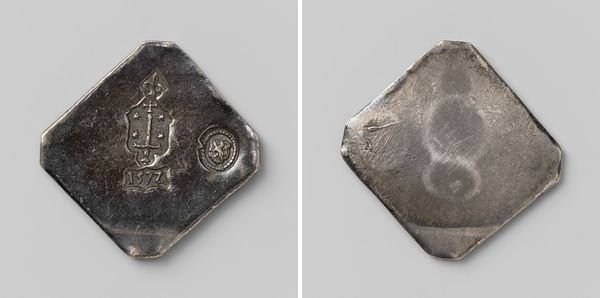
ceramic, sculpture
#
medieval
#
sculpture
#
ceramic
#
11_renaissance
#
sculpture
#
ceramic
Dimensions: diameter 4 cm, diameter 0.5 cm
Copyright: Rijks Museum: Open Domain
Editor: Here we have "Fragmenten van musketmaten," or "Fragments of Musket Measures," created anonymously sometime between 1590 and 1596. These ceramic bits and pieces are held by the Rijksmuseum. Looking at these fractured forms, I immediately feel a sense of history—they are whispering stories from the Renaissance. What stories do they whisper to you? Curator: Ah, a chorus of fragmented narratives! To me, they speak of the fragility of ambition, the ephemerality of power. Picture the musket, a revolutionary tool of its time, now reduced to these humble remnants. Each shard carries the weight of a bang, the heat of conflict, maybe even a whiff of gunpowder. Does their arrangement remind you of scattered memories, a disassembled puzzle where the grand image is lost but each piece stubbornly retains its own identity? Editor: Yes, I see that. Like incomplete artifacts. Each having some damage, as if affected by conflict. Do you think the anonymity of the artist is significant? Curator: Absolutely. The lack of a known creator enhances the universal quality. These fragments could be from anywhere, anyone. They transcend a single artistic vision, becoming symbols of collective human experience: ambition, conflict, innovation, and ultimately, decay. Perhaps anonymity invites us to become co-creators of meaning. Editor: That's a profound observation. I initially saw only broken objects, but I now recognize them as potent reminders of our own transient existence and the impact we leave behind, for better or worse. Curator: Indeed. A battlefield in miniature. The ceramic ghosts of things that once went bang! They’re really kind of beautiful, aren't they, in their ruinous state? A bit morbid but also hopeful.
Comments
No comments
Be the first to comment and join the conversation on the ultimate creative platform.
